- Home
- J. K. Rowling
Hogwarts: An Incomplete and Unreliable Guide Page 2
Hogwarts: An Incomplete and Unreliable Guide Read online
Page 2
The Hufflepuff common room is entered from the same corridor as the Hogwarts kitchens. Proceeding past the large still life that forms the entrance to the latter, a pile of large barrels is to be found stacked in a shadowy stone recess on the right-hand side of the corridor. The barrel two from the bottom, middle of the second row, will open if tapped in the rhythm of ‘Helga Hufflepuff’.* As a security device to repel non-Hufflepuffs, tapping on the wrong barrel, or tapping the incorrect number of times, results in one of the other lids bursting off and drenching the interloper in vinegar.
A sloping, earthy passage inside the barrel travels upwards a little way until a cosy, round, low-ceilinged room is revealed, reminiscent of a badger’s set. The room is decorated in the cheerful, bee-like colours of yellow and black, emphasised by the use of highly polished, honey-coloured wood for the tables and the round doors that lead to the boys’ and girls’ dormitories (furnished with comfortable wooden bedsteads, all covered in patchwork quilts).
A colourful profusion of plants and flowers seem to relish the atmosphere of the Hufflepuff common room: various cacti stand on wooden circular shelves (curved to fit the walls), many of them waving and dancing at passers-by, while copper-bottomed plant holders dangling amid the ceiling cause tendrils of ferns and ivies to brush your hair as you pass under them.
A portrait over the wooden mantelpiece (carved all over with decorative dancing badgers) shows Helga Hufflepuff, one of the four founders of Hogwarts School, toasting her students with a tiny, two-handled golden cup. Small, round windows just level with the ground at the foot of the castle show a pleasant view of rippling grass and dandelions, and, occasionally, passing feet. These low windows notwithstanding, the room feels perennially sunny.
* The complexity or otherwise of the entrance to the common rooms might be said to give a very rough idea of the intellectual reputation of each house: Hufflepuff has an unchanging portal and requires rhythmic tapping; Slytherin and Gryffindor have doorways that challenge the would-be entrant about equally, the former having an almost imperceptible hidden entrance and a varying password, the latter having a capricious guardian and frequently changing passwords. In keeping with its reputation as the house of the most agile minds at Hogwarts, the door to the Ravenclaw common room presents a fresh intellectual or philosophical challenge every time a person knocks on it.
Nevertheless, it ought not to be concluded from the above that Hufflepuffs are dimwits or duffers, though they have been cruelly caricatured that way on occasion. Several outstanding brains have emerged from Hufflepuff House over the centuries; these fine minds simply happened to be allied to outstanding qualities of patience, a strong work ethic and constancy, all traditional hallmarks of Hufflepuff House.
J.K. Rowling’s thoughts
When I first planned the series, I expected Harry to visit all four house common rooms during his time at Hogwarts. There came a point when I realised that there was never going to be a valid reason to enter the Hufflepuff room. Nevertheless, it is quite as real to me as the other three, and I always knew exactly where those Hufflepuffs were going when they headed off towards the kitchens after lessons.
Harry may never have been to the Hufflepuff common room, but he did end up in possession of a foolproof way of finding his way around the rest of the castle. Fred and George Weasley gave him something James Potter and his friends made when they were at school – the Marauder’s Map. ‘I solemnly swear that I am up to no good’.
THE MARAUDER’S MAP
BY J.K. ROWLING
Perhaps no students (even including Harry Potter, Ron Weasley, Hermione Granger and Tom Riddle) have ever explored the castle and grounds of Hogwarts as thoroughly and illicitly as the four creators and contributors to the Marauder’s Map: James Potter, Sirius Black, Remus Lupin and Peter Pettigrew.
James, Sirius and Peter were not initially impelled to explore the school grounds by night out of devilment alone (though that played its part), but by their desire to help their dear friend Remus Lupin to bear his lycanthropy. Prior to the invention of the Wolfsbane Potion, Lupin was compelled to undergo an excruciating transformation every full moon. Once his condition was discovered by his three best friends, they sought a way to render his transformations less solitary and painful, which led to them learning to become (unregistered) Animagi, so that they could keep him company without harm to themselves. The ability of Sirius Black, Peter Pettigrew and James Potter to become, respectively, a dog, a rat and a stag, enabled them to explore the castle grounds by night undetected. The interior of the castle, meanwhile, was mapped over time with the help of James Potter’s Invisibility Cloak.
The Marauder’s Map is lasting testimony to the advanced magical ability of the four friends who included Harry Potter’s father, godfather and favourite teacher. The map they created during their time at Hogwarts appears to be a blank piece of parchment unless activated by the phrase: ‘I solemnly swear that I am up to no good’, a phrase that, in the case of three of the four makers, should be understood as a joke. The ‘no good’ of which they wrote never denoted Dark magic, but school rule-breaking; similar bravado is evinced by their use of their own nicknames on the map (‘Messrs Moony, Wormtail, Padfoot and Prongs’).
The magic used in the map’s creation is advanced and impressive; it includes the Homonculous Charm, enabling the possessor of the map to track the movements of every person in the castle, and it was also enchanted to forever repel (as insultingly as possible) the curiosity of their nemesis, Severus Snape.
Although the precise circumstances surrounding the makers’ loss of their map are not given in the Harry Potter novels, it is easy to conclude that they eventually over-reached themselves and were cornered by Argus Filch, probably on a tip-off from Snape, whose obsession it had become to expose his arch-rival, James Potter, in wrong-doing. The masterpiece of a map was confiscated in Sirius, James, Remus and Peter’s final year, and none of them were able to steal it back from a well-prepared and suspicious Filch. In any case, their priorities changed in their final months at school, becoming far more serious and focused on the world beyond Hogwarts, where Lord Voldemort was successfully rising to power. All four of the map’s creators would shortly be inducted into the renegade organisation headed by Albus Dumbledore, the Order of the Phoenix, and a map of their old school – no matter how ingenious – would no longer be of use to them except as a piece of nostalgia.
The Marauder’s Map was, however, of immense use to the young Weasley twins. The story of Fred and George’s acquisition of the map is told in Harry Potter and the Prisoner of Azkaban. It was a mark of their high esteem for Harry Potter, and their belief that he stood in need of assistance with a destiny none of them yet fully understood, that they later gifted the map to him, unwittingly passing it on to the child of one of the creators.
The map was subsequently confiscated from Harry Potter by a Death Eater in disguise at the school, who recognised it as a likely source of his own discovery.
J.K. Rowling’s thoughts
The Marauder’s Map subsequently became something of a bane to its true originator (me), because it allowed Harry a little too much freedom of information. I never showed Harry taking the map back from the empty office of (the supposed) Mad-Eye Moody, and I sometimes regretted that I had not capitalised on this mistake to leave it there. However, I like the moment when Harry watches Ginny’s dot moving around the school in Deathly Hallows, so on balance I am glad I let Harry reclaim his rightful property.
The Marauder’s Map could help students escape to Honeydukes, locate enemies in the Hogwarts hallways, and insult Severus Snape, but it probably wouldn’t be much help in the Great Lake. With its murky depths and magical residents, the Great Lake is one of the castle’s more mysterious locales; the site of the second task in the Triwizard Tournament and the haunt of a host of water-dwelling magical creatures, from Grindylows to the giant squid.
THE GREAT LAKE
> BY J.K. ROWLING
The grounds of Hogwarts function partly as a nature reserve for magical creatures which have difficulty existing in Muggle-inhabited areas.
The lake is full of creatures that would make a Muggle naturalist swoon with delight – if terror did not seize them first. There are Grindylows (vicious little water demons), merpeople (of a hardy Scottish strain) and a giant squid, which is semi-domesticated and permits students to tickle its tentacles on sunny days, when it basks in the shallows.
Giant squid genuinely exist, though they are most mysterious creatures. Although their extraordinary bodies have been washed up all over the world, it was not until 2006 that a live giant squid was captured on film by Muggles. I strongly suspect them of having magical powers.
J.K. Rowling’s thoughts
The lake is the setting for the second task that the Triwizard competitors must face in Goblet of Fire, which is also my favourite task. I find it satisfyingly creepy; I like the diversity of the methods employed by the competitors to breathe underwater, and I enjoyed plumbing the depths of a part of the grounds that had never been seen before. In the original draft of Chamber of Secrets, I had Harry and Ron crash into the lake in Mr Weasley’s Ford Anglia, and meet the merpeople there for the first time.
At that time I had a vague notion that the lake might lead to other places, and that the merpeople might play a larger role in the later books than they did, so I thought that Harry ought to be introduced to both at this stage. However, the Whomping Willow provided a more satisfying, less distracting crash, and served a later purpose in Prisoner of Azkaban, too. The Great Lake (which is really a Scottish loch, apparently freshwater and landlocked) never did develop as a portal to other seas or rivers, although the appearance of the Durmstrang ship from its depths in Goblet of Fire hints at the fact that if you are travelling by an enchanted craft, you might be able to take a magical shortcut to other waterways.
It’s time to get down to the real business of Hogwarts: lessons. You won’t find chemistry and mathematics on the curriculum, but then you wouldn’t expect to see Potions and Arithmancy on a Muggle timetable.
HOGWARTS SCHOOL SUBJECTS
BY J.K. ROWLING
All first-years at Hogwarts must take seven subjects: Transfiguration, Charms, Potions, History of Magic, Defence Against the Dark Arts, Astronomy and Herbology. Flying lessons (on broomsticks) are also compulsory.
At the end of their second year at Hogwarts, students are required to choose a minimum of two more subjects from the following list: Arithmancy, Muggle Studies, Divination, Study of Ancient Runes and Care of Magical Creatures.
Very specialised subjects such as Alchemy are sometimes offered in the final two years, if there is sufficient demand.
J.K. Rowling’s thoughts
A slightly different list of school subjects appears in my earliest notes. Herbology is called ‘Herbalism’, Divination is compulsory from the first year, as are Alchemy and a subject called simply ‘Beasts’, whereas Transfiguration is called ‘Transfiguration/Metamorphosis’.
If, like Hermione, nearly all of these subjects sound essential to you, then a certain magical object might come in handy. In Harry Potter and the Prisoner of Azkaban, Hermione managed to double her work load by securing the use of a Time-Turner, a magical device that enables the wearer to travel back in time. However, using a Time-Turner can have grave consequences.
TIME-TURNER
BY J.K. ROWLING
In spite of the many Muggle fantasies around the subject, time travel is possible in only a limited sense even in the magical world. While the subject is shrouded in great secrecy – investigations are ongoing in the Department of Mysteries – it appears that magic can take you only so far.
According to Professor Saul Croaker, who has spent his entire career in the Department of Mysteries studying time-magic:
‘As our investigations currently stand, the longest period that may be relived without the possibility of serious harm to the traveller or to time itself is around five hours. We have been able to encase single Hour-Reversal Charms, which are unstable and benefit from containment, in small, enchanted hour-glasses that may be worn around a witch or wizard’s neck and revolved according to the number of hours the user wishes to relive.
‘All attempts to travel back further than a few hours have resulted in catastrophic harm to the witch or wizard involved. It was not realised for many years why time travellers over great distances never survived their journeys. All such experiments have been abandoned since 1899, when Eloise Mintumble became trapped, for a period of five days, in the year 1402. Now we understand that her body had aged five centuries in its return to the present and, irreparably damaged, she died in St Mungo’s Hospital for Magical Maladies and Injuries shortly after we managed to retrieve her. What is more, her five days in the distant past caused great disturbance to the life paths of all those she met, changing the course of their lives so dramatically that no fewer than twenty-five of their descendants vanished in the present, having been “un-born”.
‘Finally, there were alarming signs, during the days following Madam Mintumble’s recovery, that time itself had been disturbed by such a serious breach of its laws. Tuesday following her reappearance lasted two and a half full days, whereas Thursday shot by in the space of four hours. The Ministry of Magic had a great deal of trouble in covering this up and since that time, the most stringent laws and penalties have been placed around those studying time travel.’
Even the use of the very limited amount of Time-Turners at the Ministry’s disposal is hedged around with hundreds of laws. While not as potentially dangerous as skipping five centuries, the re-use of a single hour can still have dramatic consequences and the Ministry of Magic seeks the strictest guarantees if it permits the use of these rare and powerful objects. It would surprise most of the magical community to know that Time-Turners are generally only used to solve the most trivial problems of time-management and never for greater or more important purposes, because, as Saul Croaker tells us, ‘just as the human mind cannot comprehend time, so it cannot comprehend the damage that will ensue if we presume to tamper with its laws.’
The Ministry’s entire stock of Time-Turners was destroyed during a fight in the Department of Mysteries about three years after Hermione Granger was granted permission to use one at Hogwarts.
J.K. Rowling’s thoughts
I went far too light-heartedly into the subject of time travel in Harry Potter and the Prisoner of Azkaban. While I do not regret it (Prisoner of Azkaban is one of my favourite books in the series), it opened up a vast number of problems for me, because after all, if wizards could go back and undo problems, where were my future plots?
I solved the problem to my own satisfaction in stages. Firstly, I had Dumbledore and Hermione emphasise how dangerous it would be to be seen in the past, to remind the reader that there might be unforeseen and dangerous consequences as well as solutions in time travel. Secondly, I had Hermione give back the only Time-Turner ever to enter Hogwarts. Thirdly, I smashed all remaining Time-Turners during the battle in the Department of Mysteries, removing the possibility of reliving even short periods in the future.

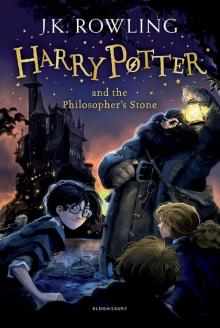 Harry Potter and the Philosophers Stone
Harry Potter and the Philosophers Stone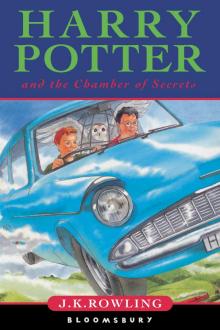 Harry Potter and the Chamber of Secrets
Harry Potter and the Chamber of Secrets Harry Potter and the Goblet of Fire
Harry Potter and the Goblet of Fire Harry Potter and the Deathly Hallows
Harry Potter and the Deathly Hallows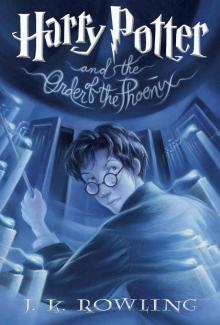 Harry Potter and the Order of the Phoenix
Harry Potter and the Order of the Phoenix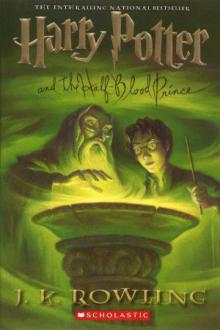 Harry Potter and the Half-Blood Prince
Harry Potter and the Half-Blood Prince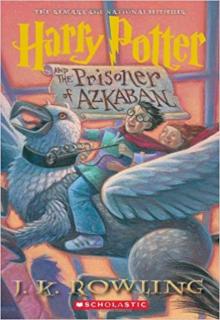 Harry Potter and the Prisoner of Azkaban
Harry Potter and the Prisoner of Azkaban Fantastic Beasts and Where to Find Them
Fantastic Beasts and Where to Find Them Short Stories from Hogwarts of Heroism, Hardship and Dangerous Hobbies
Short Stories from Hogwarts of Heroism, Hardship and Dangerous Hobbies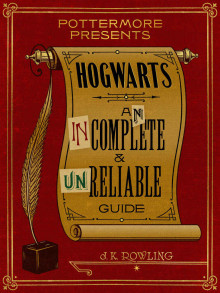 Hogwarts: An Incomplete and Unreliable Guide
Hogwarts: An Incomplete and Unreliable Guide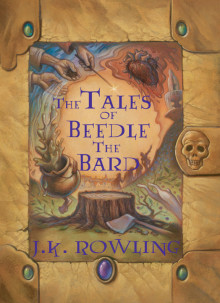 The Tales of Beedle the Bard
The Tales of Beedle the Bard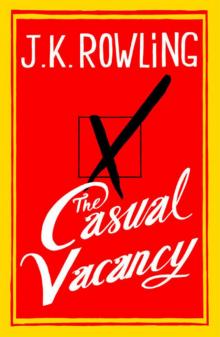 The Casual Vacancy
The Casual Vacancy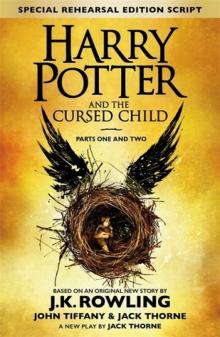 Harry Potter and the Cursed Child
Harry Potter and the Cursed Child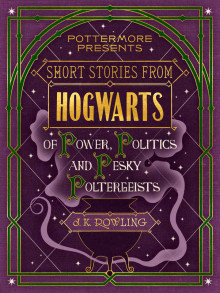 Short Stories from Hogwarts of Power, Politics and Pesky Poltergeists
Short Stories from Hogwarts of Power, Politics and Pesky Poltergeists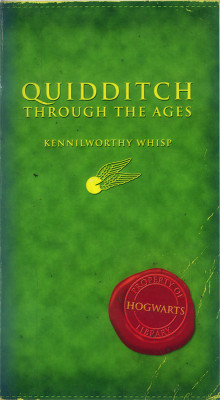 Quidditch Through the Ages
Quidditch Through the Ages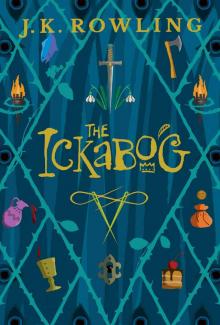 The Ickabog
The Ickabog![Fantastic Beasts, The Crimes of Grindelwald [UK] Read online](http://i1.bookreadfree.com/i/03/19/fantastic_beasts_the_crimes_of_grindelwald_uk_preview.jpg) Fantastic Beasts, The Crimes of Grindelwald [UK]
Fantastic Beasts, The Crimes of Grindelwald [UK]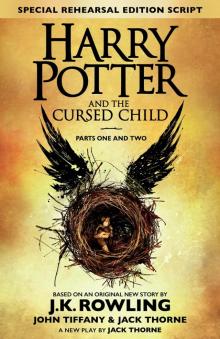 Harry Potter and the Cursed Child: Parts One and Two
Harry Potter and the Cursed Child: Parts One and Two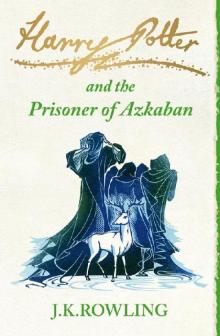 The Prisoner of Azkaban
The Prisoner of Azkaban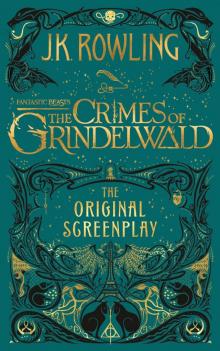 Fantastic Beasts: The Crimes of Grindelwald
Fantastic Beasts: The Crimes of Grindelwald The Hogwarts Library Collection
The Hogwarts Library Collection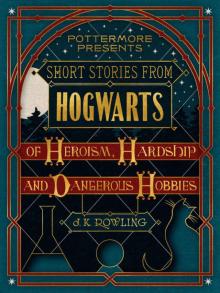 Short Stories from Hogwarts of Heroism, Hardship and Dangerous Hobbies (Kindle Single) (Pottermore Presents)
Short Stories from Hogwarts of Heroism, Hardship and Dangerous Hobbies (Kindle Single) (Pottermore Presents)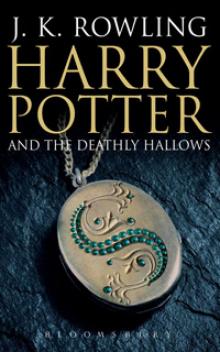 Harry Potter and the Deathly Hallows hp-7
Harry Potter and the Deathly Hallows hp-7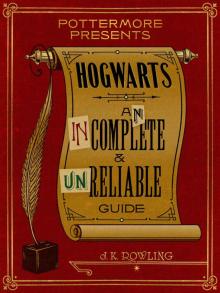 Hogwarts: An Incomplete and Unreliable Guide (Kindle Single) (Pottermore Presents)
Hogwarts: An Incomplete and Unreliable Guide (Kindle Single) (Pottermore Presents)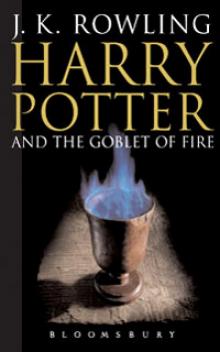 Harry Potter and the Goblet of Fire hp-4
Harry Potter and the Goblet of Fire hp-4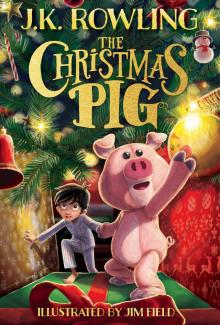 The Christmas Pig
The Christmas Pig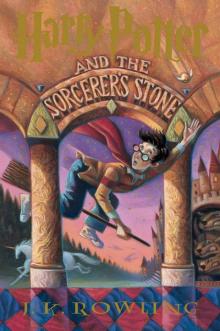 Harry Potter and the Sorcerer's Stone
Harry Potter and the Sorcerer's Stone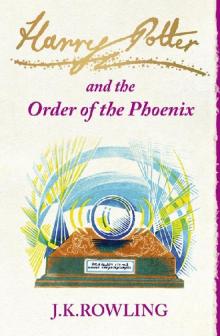 The Order of the Phoenix
The Order of the Phoenix Harry Potter and the Prisoner of Azkaban hp-3
Harry Potter and the Prisoner of Azkaban hp-3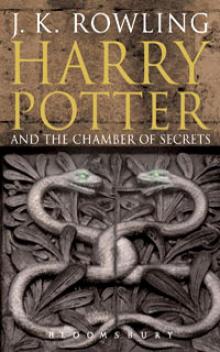 Harry Potter and the Chamber of Secrets hp-2
Harry Potter and the Chamber of Secrets hp-2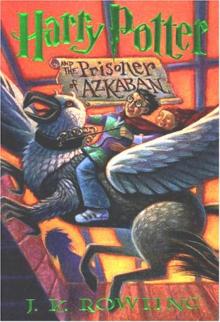 HP 3 - Harry Potter and the Prisoner of Azkaban
HP 3 - Harry Potter and the Prisoner of Azkaban The Half-Blood Prince
The Half-Blood Prince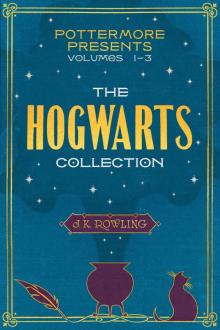 The Hogwarts Collection
The Hogwarts Collection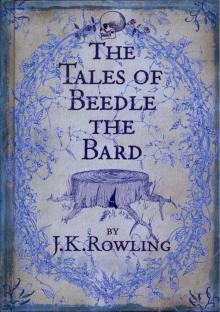 Tales of Beedle the Bard
Tales of Beedle the Bard The Goblet of Fire
The Goblet of Fire Harry Potter and the Half-Blood Prince hp-6
Harry Potter and the Half-Blood Prince hp-6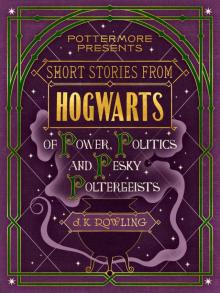 Short Stories from Hogwarts of Power, Politics and Pesky Poltergeists (Kindle Single) (Pottermore Presents)
Short Stories from Hogwarts of Power, Politics and Pesky Poltergeists (Kindle Single) (Pottermore Presents)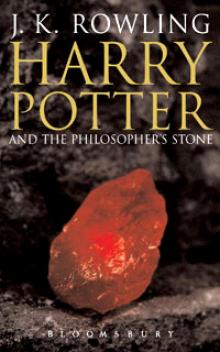 Harry Potter and the Sorcerer's Stone hp-1
Harry Potter and the Sorcerer's Stone hp-1